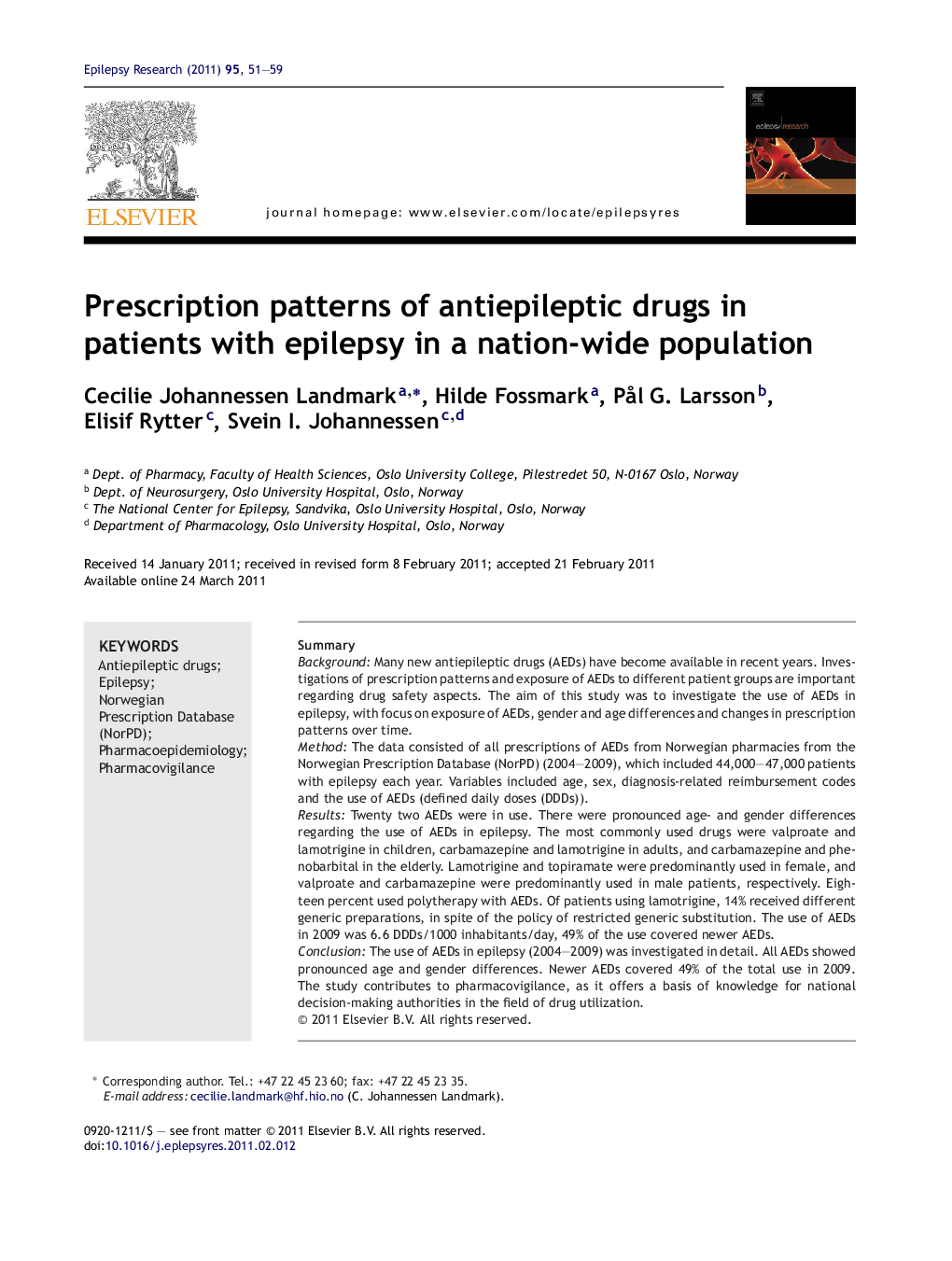| کد مقاله | کد نشریه | سال انتشار | مقاله انگلیسی | نسخه تمام متن |
|---|---|---|---|---|
| 3052360 | 1579928 | 2011 | 9 صفحه PDF | دانلود رایگان |

SummaryBackgroundMany new antiepileptic drugs (AEDs) have become available in recent years. Investigations of prescription patterns and exposure of AEDs to different patient groups are important regarding drug safety aspects. The aim of this study was to investigate the use of AEDs in epilepsy, with focus on exposure of AEDs, gender and age differences and changes in prescription patterns over time.MethodThe data consisted of all prescriptions of AEDs from Norwegian pharmacies from the Norwegian Prescription Database (NorPD) (2004–2009), which included 44,000–47,000 patients with epilepsy each year. Variables included age, sex, diagnosis-related reimbursement codes and the use of AEDs (defined daily doses (DDDs)).ResultsTwenty two AEDs were in use. There were pronounced age- and gender differences regarding the use of AEDs in epilepsy. The most commonly used drugs were valproate and lamotrigine in children, carbamazepine and lamotrigine in adults, and carbamazepine and phenobarbital in the elderly. Lamotrigine and topiramate were predominantly used in female, and valproate and carbamazepine were predominantly used in male patients, respectively. Eighteen percent used polytherapy with AEDs. Of patients using lamotrigine, 14% received different generic preparations, in spite of the policy of restricted generic substitution. The use of AEDs in 2009 was 6.6 DDDs/1000 inhabitants/day, 49% of the use covered newer AEDs.ConclusionThe use of AEDs in epilepsy (2004–2009) was investigated in detail. All AEDs showed pronounced age and gender differences. Newer AEDs covered 49% of the total use in 2009. The study contributes to pharmacovigilance, as it offers a basis of knowledge for national decision-making authorities in the field of drug utilization.
Journal: Epilepsy Research - Volume 95, Issues 1–2, June 2011, Pages 51–59